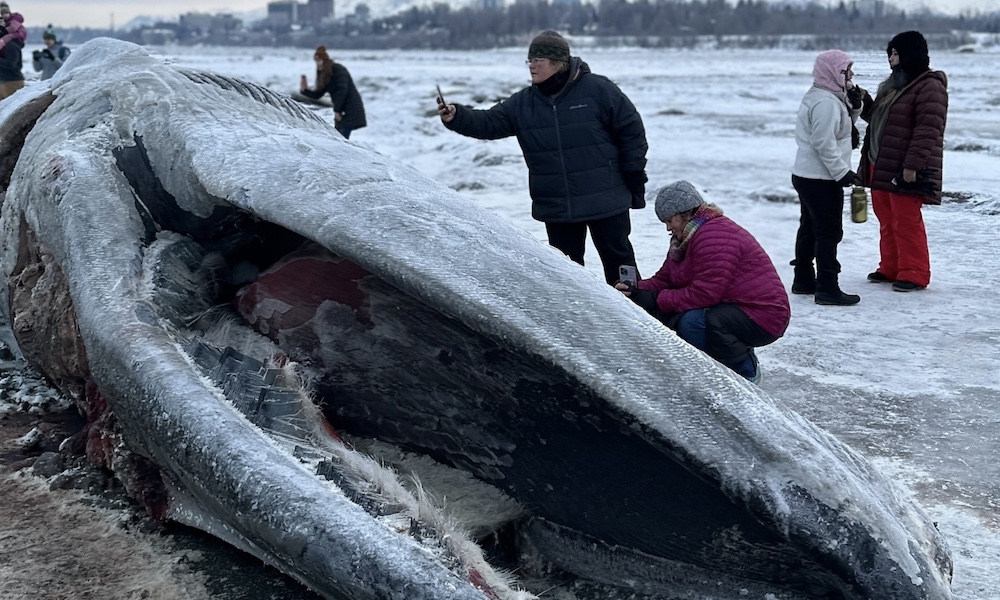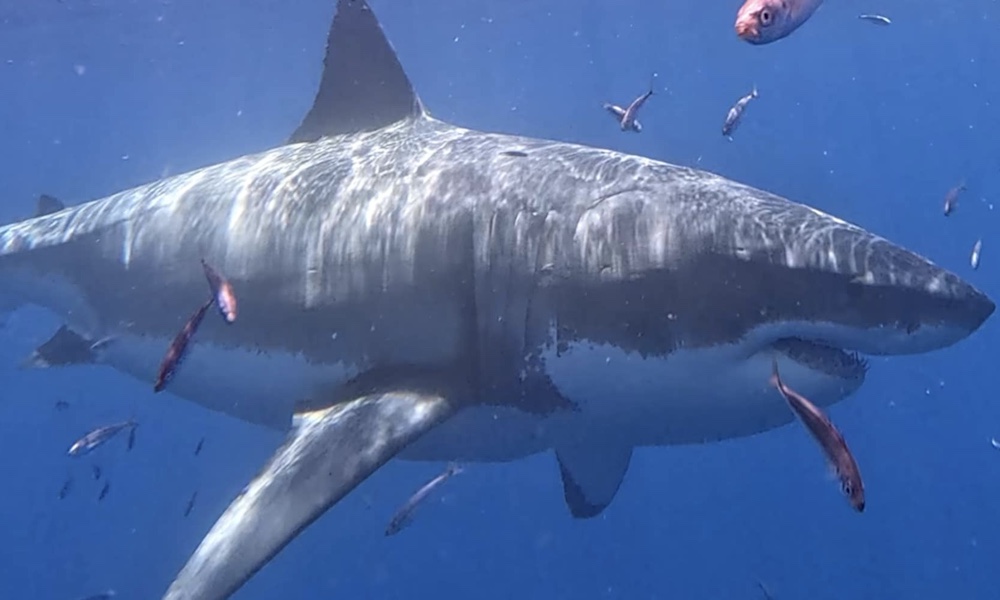A 47-foot fin whale that washed ashore near downtown Anchorage last weekend has become what one naturalist described as an ‘icy monument.”
Emma Luck, an Alaska-based researcher and naturalist, shared several images of the frozen whale carcass via Instagram on Saturday, along with the description:
“Whale strandings are not unusual in Alaska—but fin whales are rare in upper Cook Inlet, and winter strandings of any baleen whales in this region are also uncommon.
“When I heard this beautiful whale had been found, I was intrigued—how unusual! But I did not give it much thought beyond that. The tide would take her way soon.
“It did not. Instead, she froze solid. She has become an icy monument near downtown Anchorage, and the city residents have made the trek out to the frozen mud flats to view her, myself included.”
https://www.instagram.com/p/DCufguVSibU/?img_index=3
On Friday, the Anchorage Daily News reported that scientists did not know how the young female whale died, but skin samples and organs have been collected.
It was unclear how long the carcass will remain on the tidal flats, within view of downtown.
“In the meantime, the carcass has become a local attraction, drawing hundreds of people a day to the frosty mudflats,” the Daily News reported. “Social media has been filled with posts about the rare, unique, moving experience of a school bus-sized creature washed up so close to town that it can be touched and photographed.”
Barbara Mahoney, a NOAA biologist, told the Daily News that, for now, no attempts will be made to move the carcass. “We’re going to leave it to nature,” she said.
Luck continued: “Some people may look at the photos of the crowds by the whale and find it unbecoming. I can understand why, though I don’t necessarily view it that way. We may live in Alaska, but very few of us will have ever seen a fin whale (or any whale at all!) up close and personal.
“Indeed, even I have not seen a stranded whale like this before! Many people brought along their young children to see the whale, answering all of their questions, explaining how whales work, and pointing out what the different body parts do. A classroom of sorts.
“I have no doubt one of these kids will likely walk away and become a biologist because of this experience.”








